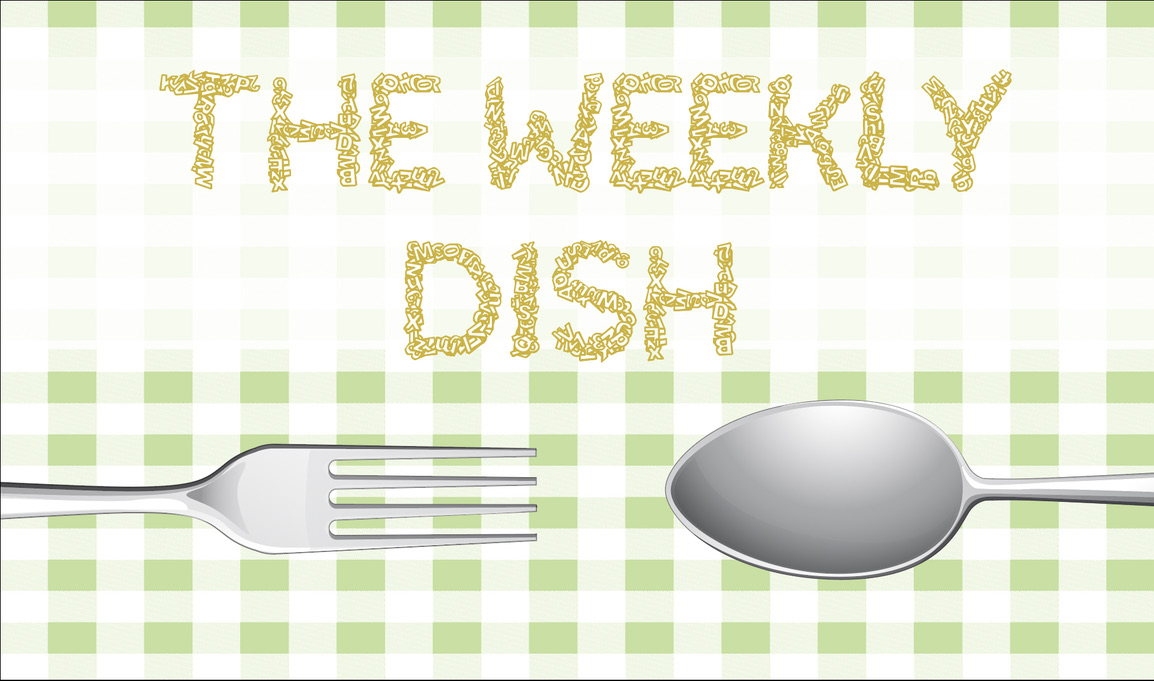
How to craft your own charcuterie board
By: Alexander Ehasz, Columnist
In a case of unfortunate necessity, many of the things that get us outdoors – casual shopping, meeting up with friends and going places, trips to the beach, camping, and the like – are not only irresponsible but illegal. And yet, spending time outdoors is both relaxing and important for mental well-being.
Therefore, there has not been a better time to have a picnic at home. Whether you have access to a sprawling back yard or just a small balcony, enjoying a lovely meal in the spring breeze is an invigorating and refreshing break from daily anxieties and monotony. Rather than the usual picnic fare – lukewarm sandwiches, potato salad, chips, and the like – I would propose an elevated experience given by a well-composed charcuterie board.
All of the elements that I personally used are of course very flexible. If you don’t enjoy a particular cheese, omit it and swap in another. If you are vegan, double down on substantial vegetables like olives and avocado, add some extra nuts, and substitute in a meatless pepperoni or summer sausage. The adaptations to personal taste and dietary need are endless.
This is also the perfect time to try something new. If you’ve been eyeing an unusual type of cracker or have been intimidated by the massive leg of prosciutto at the deli (I certainly have), now is the time you should try it. It’s also a great time to bring in new spreads and accompaniments. Try a fruit paste that you’ve never heard of, or pick up some olives from a region you can’t pronounce.
Balance is crucial when designing your charcuterie board. You wouldn’t want too many super funky aged cheeses without the counterbalance of something creamy and smooth. Similarly, too many salty, cured vegetables would overwhelm the palate. On the other end of things, a cheese board composed of mortadella, mozzarella, and pear slices would not be unpleasant, but none-the-less quite dull and uninteresting, lacking more aggressively flavored components.
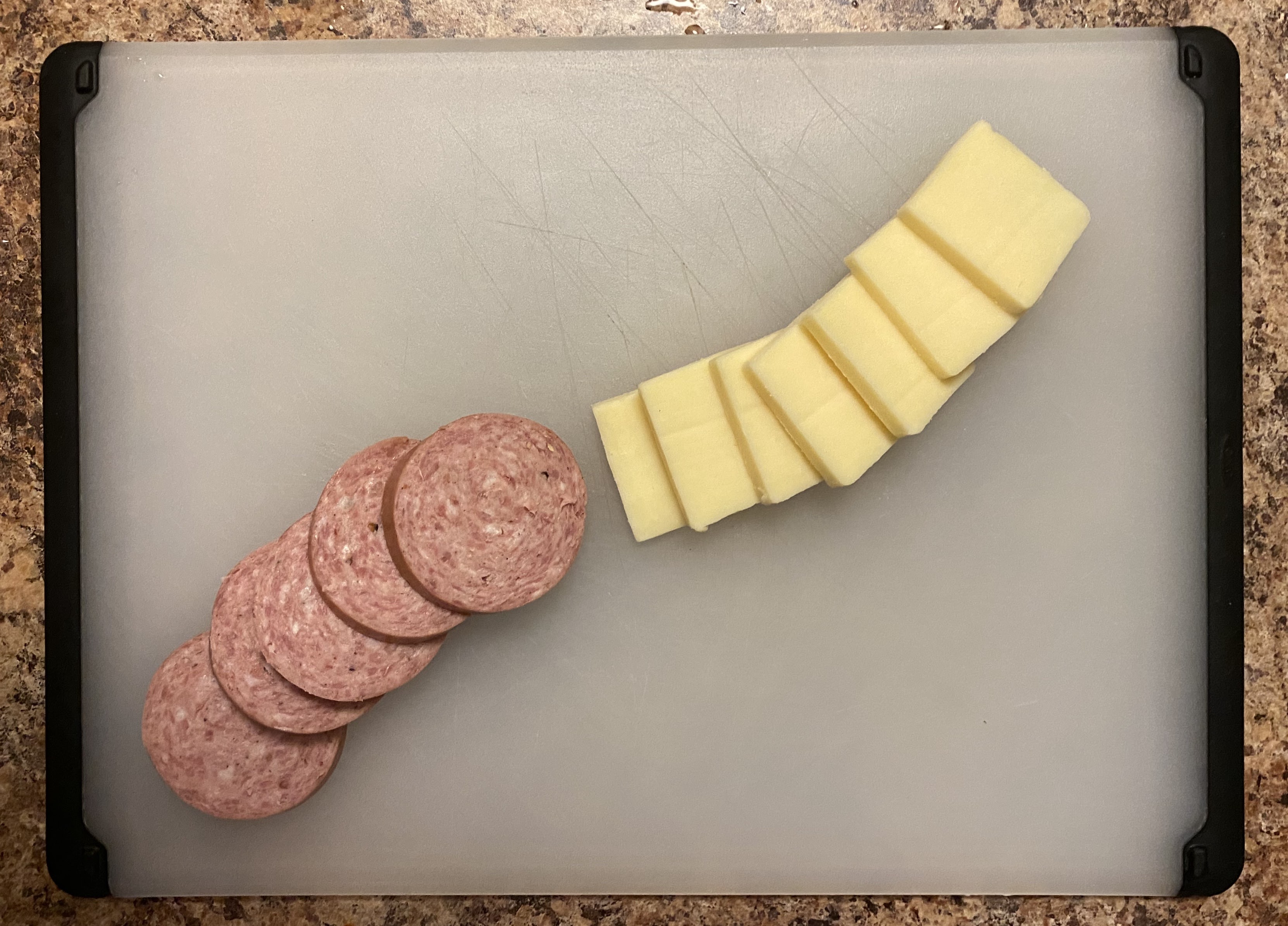
I tend to first choose one of the heartier sausage-type meats and a semi-hard cheese and arrange it in a line across the board. This arrangement gives the whole board visual structure. I used an aged cheddar and summer sausage, but other great pairings include Spanish chorizo and manchego or salame calabrese and gouda.
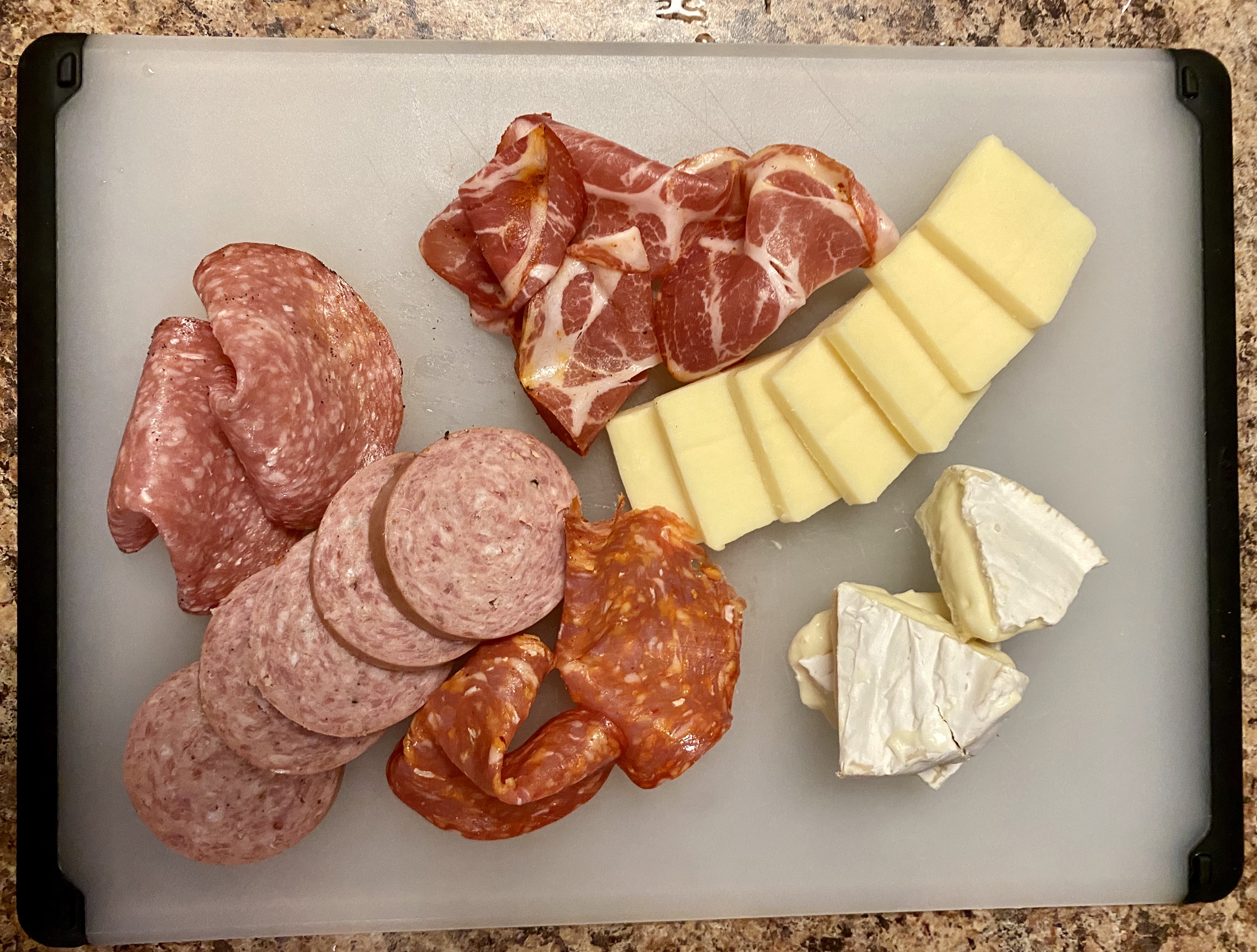
Next, I added a soft cheese, in this case wedges of double cream brie. This will contrast the first cheese nicely. I then added the thinner sliced meats – salami, pepperoni, and capicola – in small piles, making sure to leave some space for the other elements.
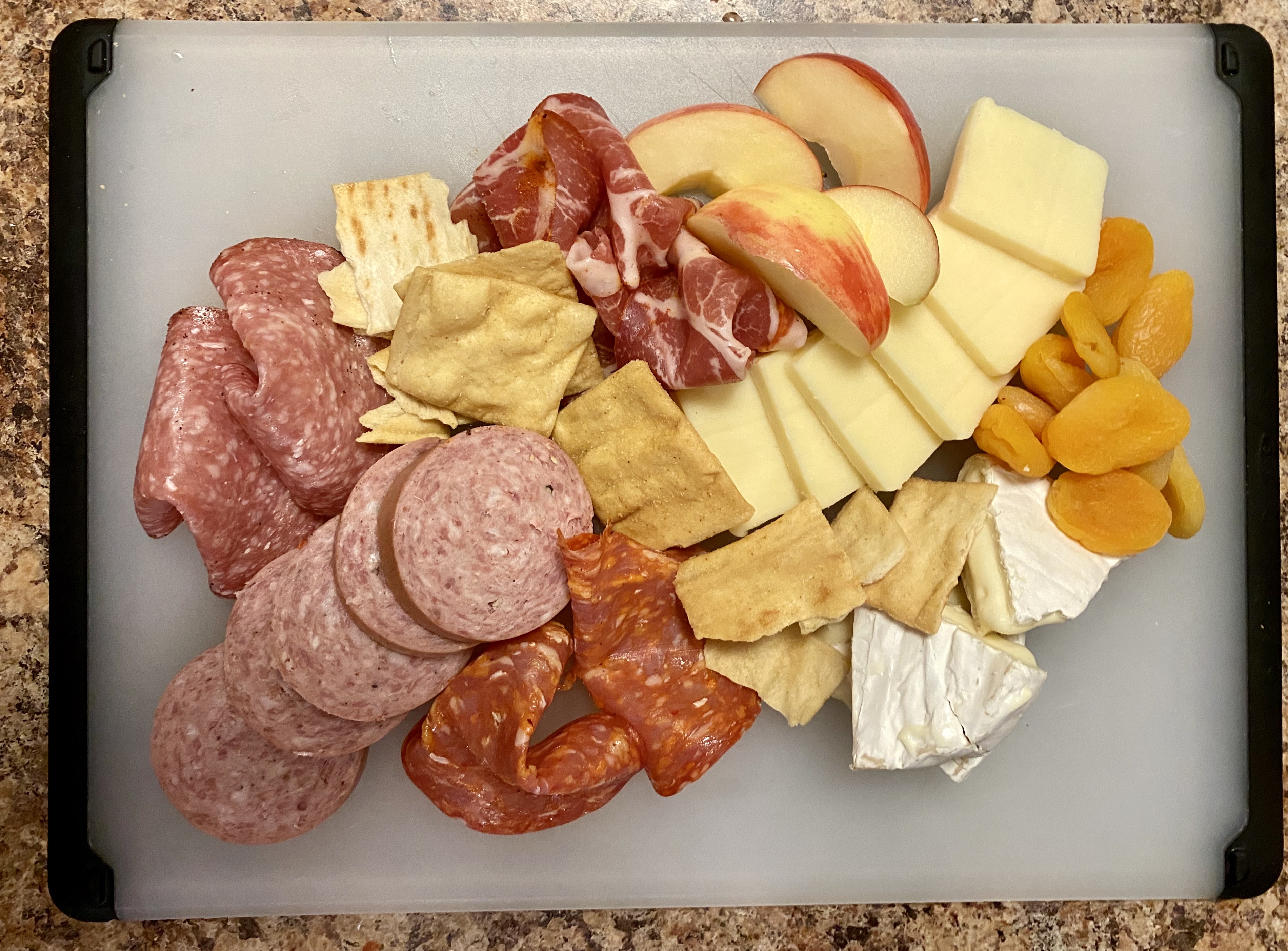
After that, I add some crackers to accompany the meats and cheeses, and then some fruit. Here, apples and apricots, to provide some sweetness to counter the other salty elements. Another great fruit option that I did not include would be a quince paste or fruit spread.
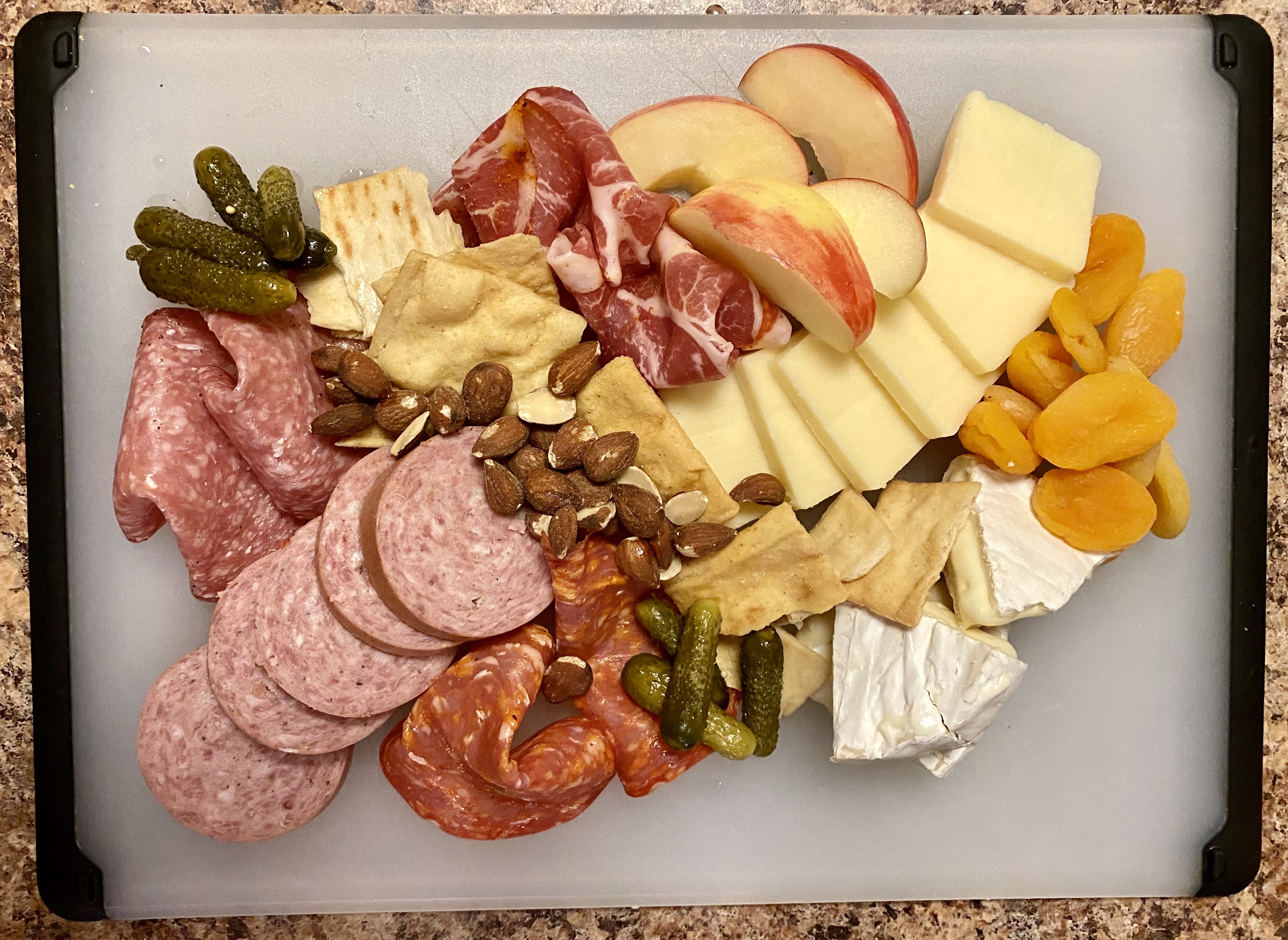
To finish this off, I added some almonds, a classic accompaniment. I also added some cornichons, a small, sweet but tangy pickle. The sharpness of these provide a crucial counterbalance to the fattiness of the meats and cheeses. Other pickled vegetables like pickled pearl onions, pickled peppers, and even a small bowl of giardiniera would work wonders.
Drink pairings are just as flexible as the components of the board. Favorites of mine include sweet, fizzy Pét-Nat wines and fruit-forward craft IPAs. Great non-alcoholic options include fresh fruit spritzers (a mix of fruit purée or juice and sparkling water) and lemonades infused with flavors like lavender.

